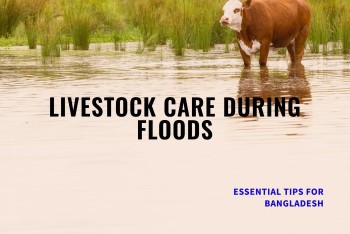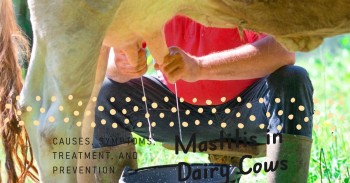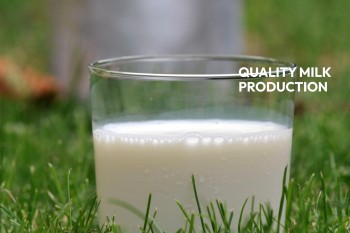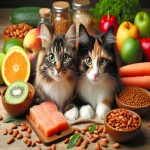DERMATOPHILOSIS ("RAIN SCALD") 🐄🌧️
Understanding the Causes and Symptoms of Dermatophilosis
Dermatophilosis, commonly known
as Streptothricosis or rain scald, is a prevalent skin infection that affects
cattle and other large animals. It is caused by a bacterium called
Dermatophilus congolensis. This condition is more likely to occur in animals
with long hair coats and in environments with high moisture levels. Rain and
snow, which lead to wet hair coats and matting, create the ideal conditions for
infection. Additionally, physical damage to the skin is often a contributing
factor, as D. congolensis typically cannot invade healthy skin. External
parasites like flies and lice, which can cause skin injuries, also facilitate
the spread of the infection. Scratching, rubbing, licking, and moist dermatitis
under matted hair can further lead to skin abrasions.
While D. congolensis may be part
of the normal skin flora in some cattle, it thrives in moist environments.
Animals that experience high levels of stress due to illness, immune system
disruptions, or corticosteroid treatments are more susceptible to developing
severe lesions. Dermatophilosis primarily affects heifers housed outside and
certain herds of adult cattle with access to outdoor environments.
Identifying Signs and Symptoms
For cattle housed outdoors, a
crusty dermatitis along the top line is a common manifestation of
dermatophilosis. Animals with short hair coats may exhibit folliculitis with
mild raised crusts and tufts of hair. In classical cases with long hair coats,
thick tufts of matted hair and crusts can be plucked off, revealing a thick, yellow-green
pus on the skin and attachment areas of the crust. Pink areas of the dermis may
become apparent once crusted tufts of hair are removed. In some instances,
cattle that have access to farm ponds, deep mud, or lush wet pastures may
develop lesions on their lower limbs and muzzle rather than the classical
dorsal distribution. Bulls may also experience lesions on the skin of the
scrotum, and cows occasionally develop lesions on the udder and/or teats.
When dermatophilosis becomes
widespread or covers more than 50% of the body surface, it can be fatal. This
condition poses a serious threat to cattle in tropical climates, where higher
temperatures, humidity, and more abundant insect populations exist. Severe
cases may result in death due to debility, discomfort, protein loss, and
septicemia.
Diagnosing Dermatophilosis
To diagnose dermatophilosis, a
veterinarian can examine pus collected from underneath plucked tufts of hair or
from the bottom of a detached tuft using direct microscopic examination. This
method allows for accurate identification of the causative bacterium,
Dermatophilus congolensis.
Effective Treatment Approaches
Treating dermatophilosis can be
challenging and time-consuming. In many cases, infections resolve spontaneously
over several weeks if affected animals can be kept dry. It is beneficial to
remove tufts of crusted hair or clip matted areas. Grooming the animals and
using an iodine or chlorhexidine shampoo can significantly aid the treatment
process. Unlike ringworm, dermatophilosis lesions are usually not focal,
necessitating overall grooming or clipping. It is crucial to thoroughly
disinfect clippers, combs, and other grooming equipment to prevent
cross-contamination. Chlorhexidine, iodophors, or bleach can be used for this
purpose. However, it is important to consider that during winter, animals may
require as much hair as possible to survive outdoors.
In cases of diffuse disease,
systemic therapy with penicillin or oxytetracycline is highly effective and can
be life-saving. The standard treatment recommendations for dermatophilosis
include:
1. Topical Treatments:
- Grooming to remove crusts is
highly beneficial.
- Clipping long hair, if
feasible, assists in managing the condition.
- Iodine shampoos, when
available, can be used for washing the affected areas.
2. Systemic Treatments:
- Intramuscular (IM) penicillin
administered twice daily at a dose of 20,000 U/kg for 5 to 7 days.
- IM long-acting oxytetracycline
administered at a dose of 20 mg/kg once.
It is essential for handlers to
wear gloves and wash themselves with iodophor soaps after handling or treating
affected cattle to prevent the spread of the infection.
Preventative Measures and Additional Considerations
While treating dermatophilosis is
crucial, implementing preventative measures can help minimize the occurrence of
this condition. Maintaining proper hygiene and cleanliness in the animal's
environment is essential. Regular grooming practices, such as brushing and
cleaning, can help prevent matting and reduce the risk of skin abrasions.
Additionally, controlling external parasites, such as flies and lice, through
appropriate treatments and management practices can significantly decrease the
likelihood of dermatophilosis.
Ensuring that cattle have access
to clean and dry resting areas is vital. If possible, providing shelter during
periods of heavy rain or snow can help protect the animals from excessive
moisture. Good nutrition and overall herd health are also important factors in
preventing dermatophilosis. A well-balanced diet that meets the nutritional
needs of the cattle can boost their immune system, making them more resilient
to infections.
Regular veterinary check-ups are
recommended to monitor the overall health of the herd and promptly address any
potential issues. Your veterinarian can provide guidance on vaccination
protocols and suggest appropriate measures to maintain the well-being of your
cattle.
Ensuring the Well-being of Your
Cattle 🐄💚
Dermatophilosis, or rain scald,
can pose a significant threat to the health and well-being of your cattle.
Understanding the causes, signs, and appropriate treatment methods is vital for
effective management. By keeping your animals dry, engaging in regular grooming
practices, and using topical and systemic treatments as recommended by your
veterinarian, you can minimize the impact of this skin infection. Regular
veterinary check-ups and preventative measures, such as parasite control, can
also contribute to the overall health of your cattle.


















